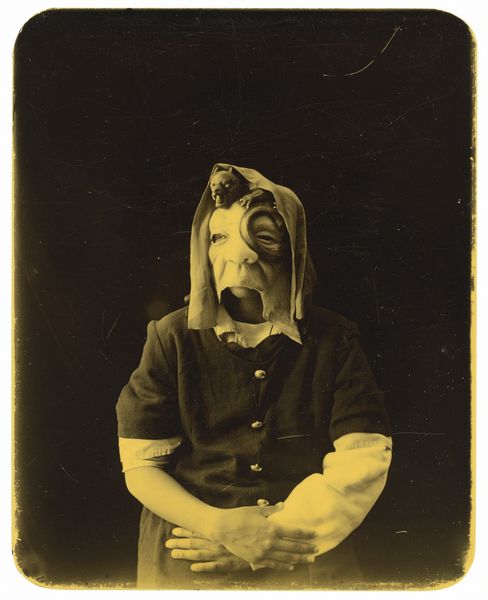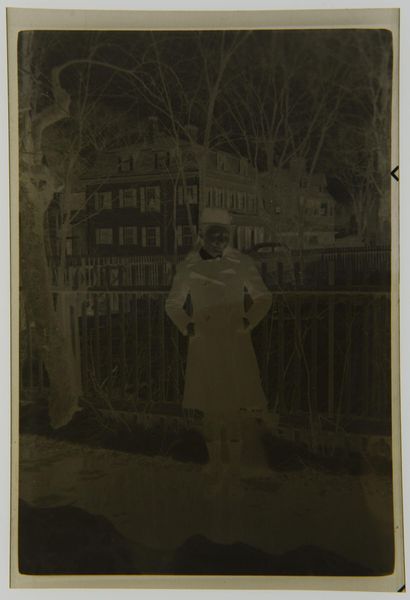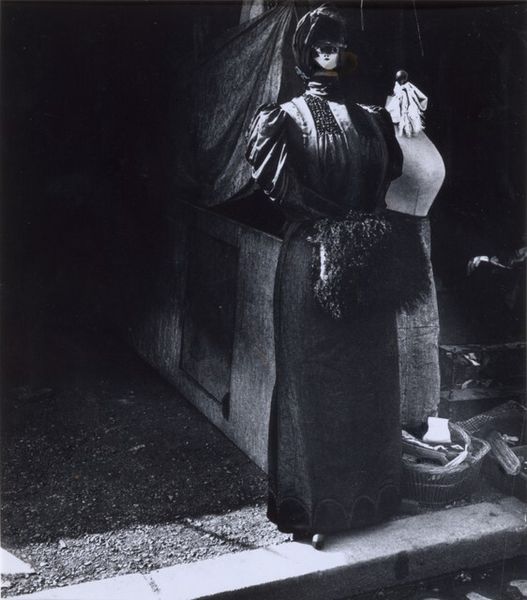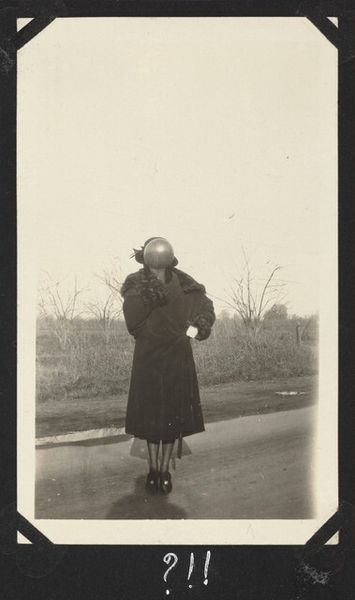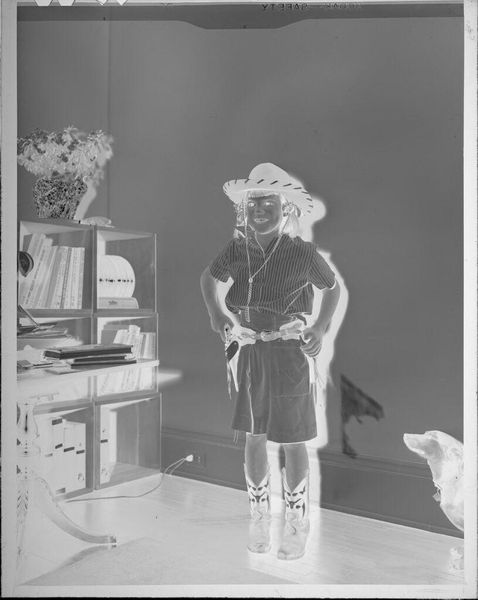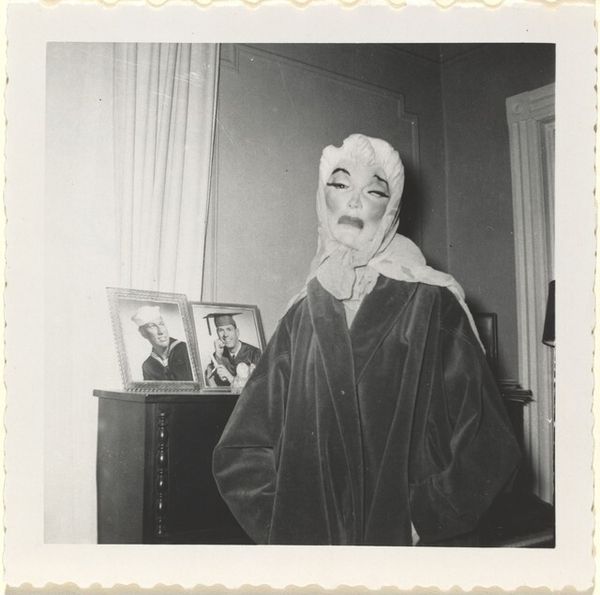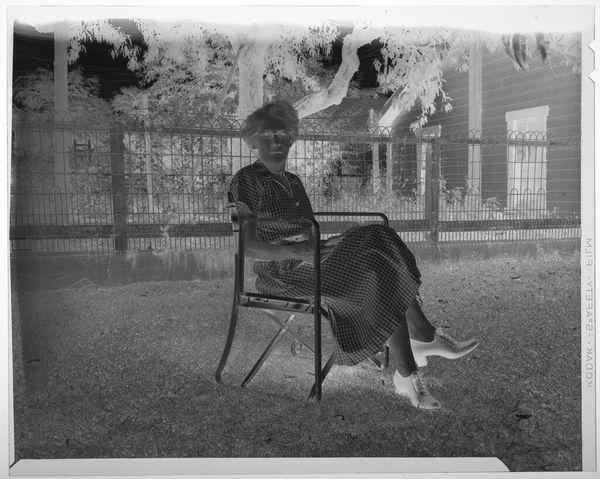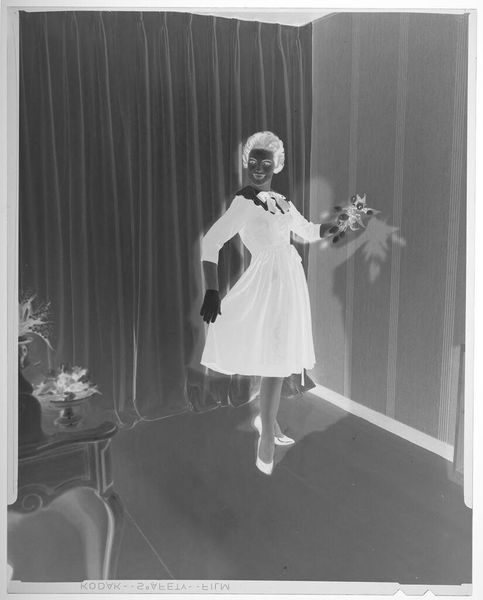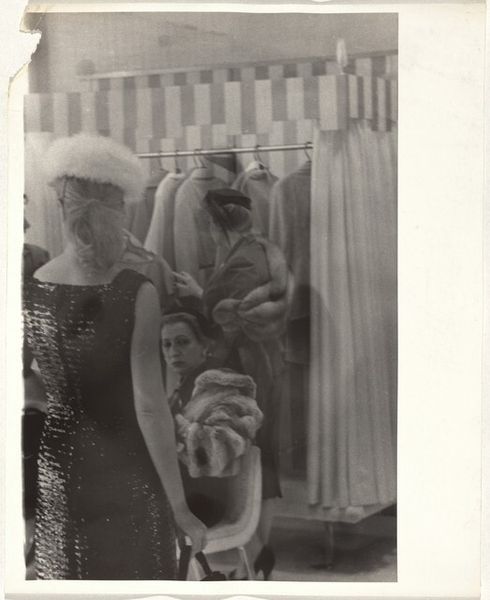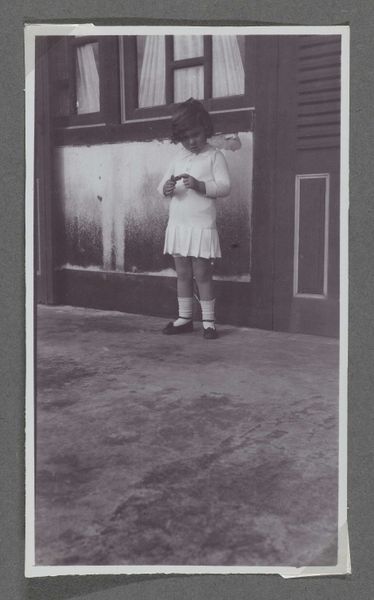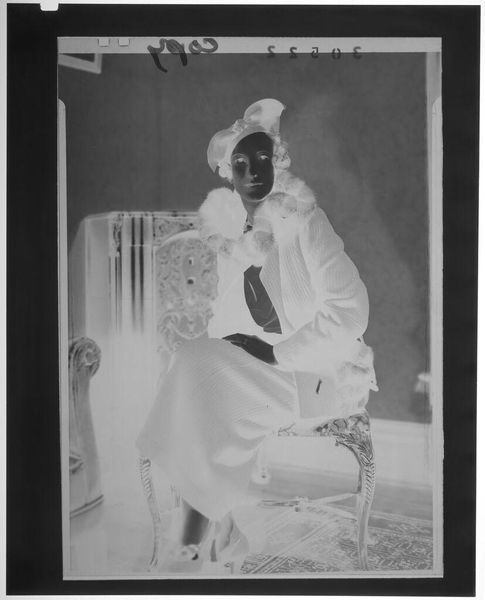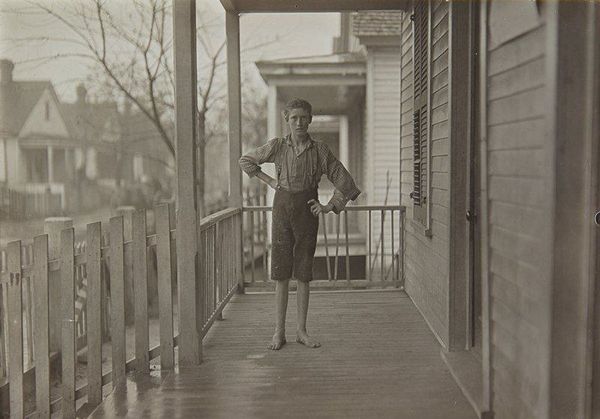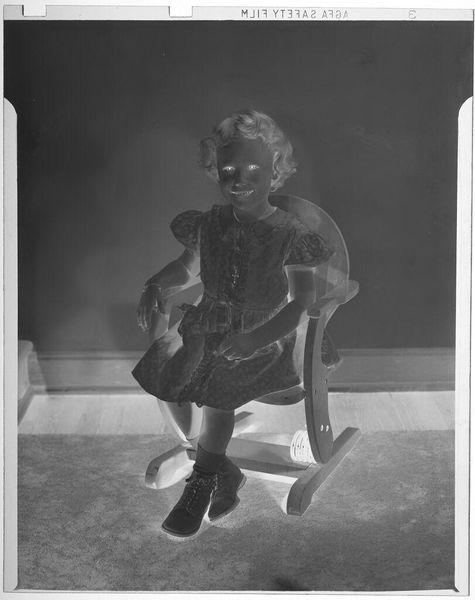
photography, gelatin-silver-print
#
portrait
#
street-photography
#
photography
#
historical photography
#
portrait reference
#
gelatin-silver-print
#
ashcan-school
#
portrait art
#
modernism
#
realism
Dimensions: image: 12.1 x 7 cm (4 3/4 x 2 3/4 in.)
Copyright: National Gallery of Art: CC0 1.0
Curator: Here we have an intriguing gelatin-silver print, tentatively dated to the 1930s, its author listed as anonymous, known as "Untitled (Woman with face blacked out)." Editor: Well, it certainly makes an impression. The…void where her face should be is immediately unsettling, yet draws my eye. There's a stillness, despite the odd alteration. Curator: Indeed. What I find compelling is the overt act of image manipulation. The defacement, so to speak, brings forth questions about who altered it, and why. Was it a deliberate artistic gesture, a political act of censorship, or even a personal act of frustration? The possibilities are many. Editor: I'm focusing on the materiality itself – a gelatin-silver print indicates mass production, widespread circulation of imagery, and then *this*... This violent, dark interruption of that process. It shifts it from mere documentation into something confrontational. Look at her clothes, that long coat, the careful way she's holding her gloves, she embodies middle-class respectability, contrasted against such visual anarchy! Curator: It evokes elements of the Ashcan School aesthetic— a slice of ordinary urban life disrupted. One has to consider what this photograph meant within its original social milieu. Perhaps it touched on hidden societal anxieties, or offered subtle critique on societal norms and expectation for women. Editor: Or was there an issue of control, appropriation? Who held power over image-making, image owning? Even her dress becomes fascinating in itself. It hints at how fashion trends become standardised and manufactured on such a scale to fit every women. How many "ordinary" people did mass media start portraying at this time, I wonder... Curator: So much is suggested and so little concretely answered. It leaves us in the space of speculative interpretations about gender, class and maybe loss of individual identities, viewed through the dark lens of altered images that the establishment wants. Editor: It makes me look beyond the image, toward all those implicated in the process of taking, developing, and, yes, altering the original photograph. And reminds me what can be achieved even when taking pictures in times of crisis. It may give birth to whole new subcultures as the picture ages. Curator: Precisely! A disquieting and remarkably potent intervention on a traditional medium—an enduring statement, if you ask me, despite all its unknown context. Editor: A stark reminder of how our everyday encounters, and even photographs, become charged objects by their very process of production and those very human hands which alter them.
Comments
No comments
Be the first to comment and join the conversation on the ultimate creative platform.
